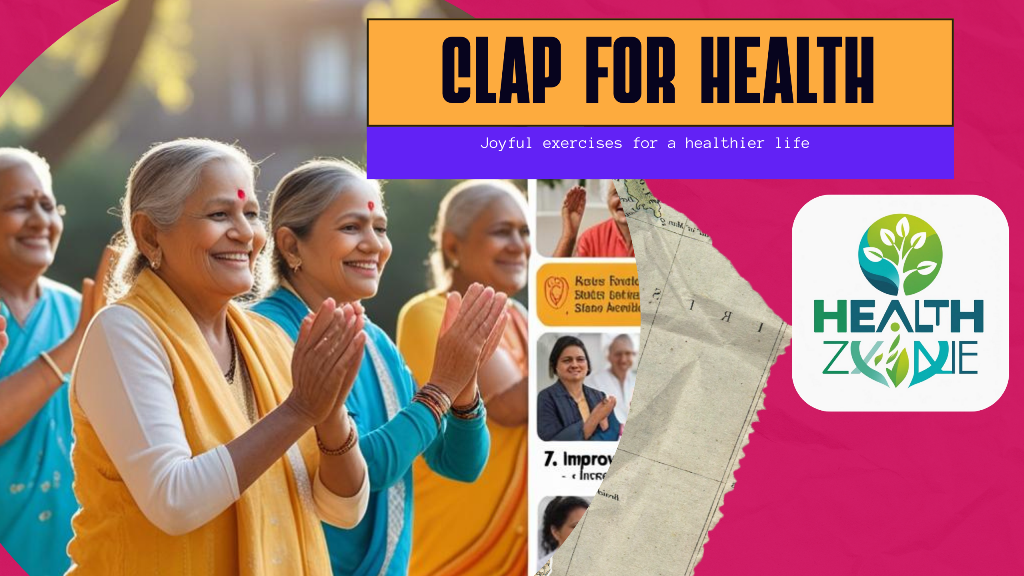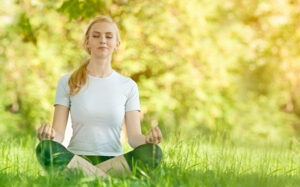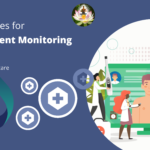Health Benefits of Clapping

Clapping is more than just applause—it’s a simple, powerful practice that supports holistic wellness.
1. Introduction: The Power in Your Palms
Clapping is something we all do instinctively—when we’re happy, when we celebrate, or when we want to encourage someone. But what if this simple action holds far more power than we imagine? Beyond being a gesture of appreciation, clapping has gained attention in wellness circles as a technique that stimulates both physical and emotional healing. From ancient Eastern healing practices to modern group fitness routines, the act of clapping is emerging as a versatile tool for holistic well-being.
In this piece, we explore the many layers of Benefits of Clapping—how it boosts blood circulation, enhances the immune system, relieves stress, elevates mood, sharpens focus, and fosters social bonds. Whether you’re a fitness enthusiast or someone looking to add an easy wellness practice to your routine, the humble clap might just become your new best friend. Here’s a comprehensive look at 10 compelling benefits of clapping, backed by scientific findings, traditional wisdom, and practical experience.

2. Physical Health Benefits of Clapping
2.1 Enhances Blood Flow Naturally
Clapping activates a massive network of nerves, muscles, and blood vessels in your palms and forearms. This rhythmic impact sends gentle pressure waves through your upper body, triggering improved circulation. Enhanced blood flow ensures tissues receive more oxygen and nutrients—supporting cardiovascular health and boosting energy.
2.2 Supports Immune Function
In traditional healing, stimulating the palm is thought to activate lymphatic channels and glandular zones. While more clinical studies are needed, anecdotal reports suggest that regular clapping can help mobilize immune cells. Simply put, clapping may complement your existing health practices by encouraging your body’s natural defenses.
2.3 Encourages Joint Mobility & Bone Strength
Repeated claps work muscles in your hands, wrists, elbows, and shoulders, delivering light stress that can preserve joint flexibility and bone density. This is especially valuable for older adults or those with early-stage arthritis. Over time, these small movements support physical resilience and ease stiffness.
2.4 Acts as a Natural Pain Reliever
Clapping triggers endorphin release—your brain’s natural “feel-good” and pain-blocking chemicals. Regular spoken or silent clap cycles help alleviate discomfort, improve mood, and promote relaxation. It becomes a free, body-powered method to manage tension and discomfort.

3. Mental Health Benefits of Clapping
3.1 A Quick Stress Buster
When your mind races, clapping offers a grounding sensory reset. The rhythmic touch, sound, and sensation act like a mini mindfulness moment—clearing mental clutter and reducing stress levels almost instantly.
3.2 Boosts Mood Instantly
Clapping is innately tied to positivity—it’s associated with celebration and encouragement. Even in solitude, the act can shift your internal state, tapping brain centers responsible for pleasure and motivation. It’s a one-minute mood booster with noticeable effect.
3.3 Improves Focus and Mental Sharpness
Clapping in patterns or to music engages motor planning, timing, and coordination—lighting up multiple brain regions. Studies show that hand‑clapping games improve children’s writing, spelling, and concentration. Likewise, adults recover alertness and reduced tension through rhythmic practice.

4. Emotional & Social Benefits of Clapping
4.1 Sparks Joy & Connection
When people clap together—whether in a workshop, class, or gathering—they synchronize rhythm and energy. This physical coordination releases shared positivity and emotional uplift. Clapping breaks barriers, fostering inclusion and group morale.
4.2 Builds Confidence
Receiving applause validates effort. But clapping for others also boosts your own self-worth. It positions you as a positive contributor, building assertiveness and generosity.
5. Cultural and Holistic Perspectives of Clapping
Across Eastern systems like Ayurvedic and Chinese healing, palm stimulation—including clapping—is used to activate energy pathways. Morning group clapping sessions in parks echo these traditions. Even children’s clapping games serve developmental purposes—enhancing motor skills and sociability. Rituals from flamenco to African ceremonies celebrate clapping as more than sound—it is a cultural echo of unity, strength, and healing energy.

6. How to Add Clapping to Your Daily Routine
- Morning Ritual: Start your day with 2–5 minutes of brisk clapping to wake your system.
- Pair with Breath: Clap in sync with inhales/exhales to deepen calm.
- Music & Movement: Clap along to a favourite song or routine.
- Group Settings: Use clapping in meetings, family fun, or classes.
- Children’s Play: Organize a clapping-game break for motor-boosting, focus-enhancing fun.
7. Sample Clapping Routines
- Basic Warm-up: 30 seconds of steady claps, palms meeting firmly.
- Fast Pulse: 20 seconds of rapid clapping, 10 seconds of rest—repeat 3–5 times.
- Mindful Clap: Slow inhale, gentle clap, long exhale—perfect for stress relief.
- Combined Movements: Clap while rotating wrists, shoulders, or stepping side-to-side for body engagement.
Each routine takes just 3–10 minutes—ideal for everyday integration.

8. Science & Research Highlights
- Brain Activation: fMRI scans show clapping triggers stronger activation in motor and supplementary brain regions than other simple hand movements, offering cognitive stimulation.
- Bone & Joint Gains: A 2017 mini-review noted clapping boosts bone health, aids arthritis, and relieves back/joint pain.
- Children’s Development: Studies find clapping games improve handwriting, spelling, concentration, and social integration in young learners.
- Stress Reduction: Regular clapping therapy lowers stress hormone levels, promoting mental well-being.
- Rhythm & Coordination: Music science research reveals clapping improves timing, rhythm, coordination, and multisystem motor integration.
These findings support clapping as a free, scientifically grounded wellness practice.
Watch More Health Video on YouTube
9. FAQs & Practical Cautions
Can clapping cause harm?
Generally safe. If you have wrist or hand issues, use softer claps or change postures. Wrist stretches afterwards help.
How much is enough?
Even 2–5 minutes daily offers benefits. Aim for up to 15 minutes at a comfortable pace.
Is it a treatment?
Clapping isn’t a cure. Use it as a complementary wellness habit—not a substitute for medical care.
What about kids?
Supervised clapping games are beneficial for key developmental skills—but ensure good posture.
Need any equipment?
No. Optional palm oil adds warmth and feel. A comfortable chair or mat helps stability.
10. Conclusion: Clap for Your Health
Clapping is accessible, free, and surprisingly powerful. It enhances circulation, strengthens joints, boosts immunity, sharpens mind, and lifts emotional and social energy. Whether solo or in groups, it shifts energy, clarifies focus, and sparks joy via rhythm and touch. The next time you clap—whether in celebration or self-affirmation—think of it as wellness practice.
Read More : 20 Powerful Health Benefits of Jaggery











